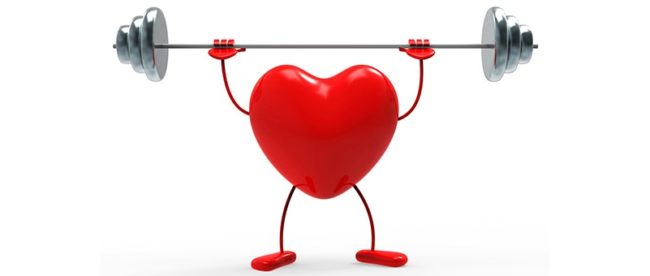Go RED for Women: Get the facts on Heart Health

The month of February typically brings to mind chocolate, roses and romance. Matters of the heart rely on the heart muscle being healthy and strong enough to circulate oxygen and nutrients to the rest of the body.
February is American Heart Month, and the recently passed February 1st is Go Red for Women Day. The Centers for Disease Control and Prevention reports that heart disease is the leading cause of death for both men and women. Heart disease is often referred to as a “silent killer” of women because the symptoms can be nonspecific. Unfortunately, according to the American Heart Association, heart disease and stroke cause 1 in 3 deaths in women each year – more than all cancers combined.
Heart disease affects the blood vessels and cardiovascular system. A condition called atherosclerosis develops due to plaque building up in the walls of the arteries. This buildup narrows the arteries, making it harder for blood to flow through. If a blood clot forms, it can stop the blood flow. This can cause a heart attack or stroke.
A heart attack is a circulation problem within the body. It signals that your heart is diseased and cannot get the blood it needs to pump efficiently.
Signs and symptoms of a heart attack
The signs and symptoms of a heart attack can include:
- Uncomfortable pressure, squeezing, fullness or pain in the center of your chest. It may last more than a few minutes or go away and comes back.
- Pain or discomfort in one or both arms, the back, neck, jaw or stomach.
- Shortness of breath with or without feeling discomfort in your chest.
- Breaking out in a cold sweat, nausea or lightheadedness.
The warning signs and symptoms of a heart attack can look different in women. As with men, women’s most common heart attack symptom is chest pain or discomfort. However, women often describe the chest pain felt during a heart attack as a pressure or a tightness, not crushing chest pain. Women are also somewhat more likely than men to experience other common heart attack symptoms, particularly shortness of breath, nausea/vomiting and back or jaw pain. Another difference is that women’s heart attack symptoms may occur more often when they are resting or asleep.
If you experience any of the above signs or symptoms, call 9-1-1 and get to a hospital right away.
How can you prevent a heart attack?
There are multiple risk factors for heart disease including high cholesterol, high blood pressure, obesity, type 2 diabetes, smoking, stress and inactivity. The key takeaway is that heart disease in women can be treated and prevented.
To take care of your whole heart, take care of the whole you. Here are a few lifestyle changes to consider:
- Don’t smoke
- Eat well. Heart-healthy foods like fruits, vegetables, healthy proteins (fish, beans, chicken, nuts and low-fat dairy) and whole grains will help keep your heart and blood vessels in good shape.
- Lose or maintain your weight. Lowering your weight by just 10 percent can significantly reduce your risk for heart disease.
- Stay active. Aim for 150 minutes of exercise each week, with about 30 minutes of exercise most days.
- Destress your life
- Manage your blood sugar
- Control your blood pressure
- Know your family history. This is a key, but complex, factor in your potential risk for heart disease.
Research conducted by Kaiser Permanente has shown that lifestyle changes and medications can lower heart disease rates by as much as 25 to 30 percent.
- Patricia Dietzgen, D.O., is a family medicine physician practicing at the Kaiser Permanente Frisco medical offices
Mountain Town Magazine | We are Colorado’s Mountain Town Magazine
Copyright © 2019 MTN Town Magazine all rights reserved.
